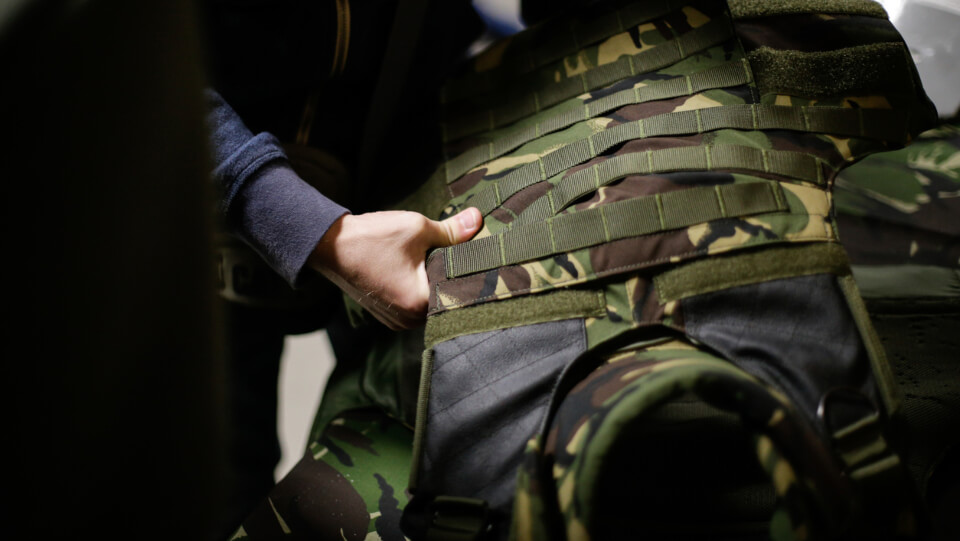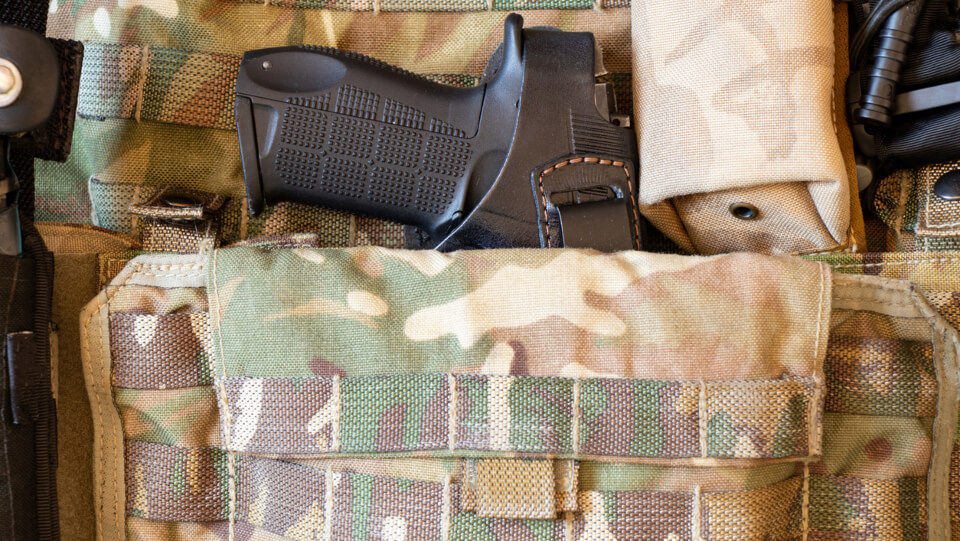When it’s time to protect yourself and your family, you should stop at nothing to ensure your safety. Survivalists know that a SHTF situation can arise at any time, so you need to be ready. When the bullets come flying, will you have what you need?
Body armor is one of the best ways to protect yourself. This guide will show you the proper body armor for five survival situations.

What Are the Standards for Body Armor?
Knowing which body armor to buy can be confusing. Luckily, the experts have researched and tested different types of armor to see what they’re capable of.
The Department of Justice (DOJ) has standards for body armor that will help you narrow down your decision. The DOJ’s guide outlines armor on a scale of I to IV, with level IV giving you the strongest protection allowed.
1. What Should You Use for Home Defense?
It all starts in the house — it’s where you sleep at night and hang out with your family and friends. Anybody who encroaches on your territory better prepare themselves. So, what type of armor is best for home defense? You’ll have a few options, but some stand out.

For home defense, you’ll likely be in close quarters when facing your enemies, so you’ll need a fighting bag to pair with your armor. The vest or plate you choose should be light so you can move around quickly. If you need maneuverability, choose a type IIIA vest because it will protect against pistols. Home invaders will likely bring a handgun, allowing you to trade a heavier plate for increased motion.
Type IIIA vests are practical because they can stop a 9mm FMJ bullet. These vests will also protect you against a .44 Mag JHP. They won’t halt rifle ammunition, but a type IIIA vest may be the perfect fit for defending against a home invasion.
2. What Armor Is Best for Close Contact?
Home invasions can mean you get up close and personal with the enemy. You could also face your foe in the streets when riots occur in the city and looters go from house to house. These situations require something tough but maneuverable at the same time. A ceramic body armor plate is an excellent choice if this sounds like something you need.
Ceramic plates are ideal because they’re light, concealable armor that gives you flexibility. They’re about 37% lighter than steel plates, are more affordable than polyethylene (PE) and last around five years if they don’t take gunfire. Ceramic plates work best if you’re in the middle of a fight and you don’t suspect the perpetrator has a gun.
3. Can Light Armor Protect Against Melee Attacks?
Sometimes, the enemy brings a knife to a gun fight. While you have the upper hand with a gun, their blade can be deadly if they get close to you. Most armor plates protect against knives and swords, but the best is kevlar, a synthetic fiber. This material comes from poly-paraphenylene terephthalamide. Armor plates with kevlar are one of the best all-around on the market.
Kevlar is a popular armor plate because its parallel molecules result in tight bonds. They’re strong and can protect you against knives, swords or any stabbing situation. The synthetic fibers provide incredible cut resistance. Kevlar will also save you from low-velocity ammunition. It won’t shield you against rifle ammunition, but it is lighter, more comfortable and flexible than steel.
4. What Protects You From Powerful Ammunition?
Life would be easier if the enemies you face didn’t have a gun — unfortunately, it’s not that easy. At home or in the streets, somebody may have a long, powerful weapon you can’t readily avoid. This situation calls for a heavy-duty piece of armor. A level IV armor will get the job done and protect you from powerful ammunition. Level IV covers survivalists from a .30 caliber M2 AP, so you know you’re getting the best protection possible, even from rifle ammunition.

Opt for a PE plate if you want protection but still need flexibility. PE body armor is comparable to steel, but it’s lighter and more comfortable. These plates weigh only between two and five pounds, making them ideal survival gear for most people. Though it’s light, PE still protects you from rifle ammunition.
PE is quite durable. However, these armor plates aren’t as effective if you’re in sweltering weather. Experts have tested these plates and determined PE starts to weaken once the temperature hits 158° Fahrenheit. The highest temperature recorded on Earth was 134° Fahrenheit, so you can wear it in most places. However, don’t leave the armor in your car in the desert on a hot day. Also, PE tends to be more expensive than steel or ceramic.
5. What Gives You Maximum Protection?
Sometimes, SHTF situations reach a peak. Someone or something is coming at you full force and you don’t have enough time to get away. You must stay and fight with everything you have because they’re bringing the kitchen sink. In this situation, you’ll need the most robust protection available in body armor.
Steel is one of the most popular armor plates because of its strength. They give you the best protection when someone attacks you with rifle fire and melee attacks. One critical advantage of steel is it can absorb bullets multiple times to the same spot. Also, your steel armor plates last longer than other materials — typically about 15–20 years — whereas others may only give you five to seven.
Body Armor in SHTF Situations
Body armor is for more than police officers and military personnel. Civilians also need them for SHTF situations. When trouble arises, you’ll use any advantage to take care of yourself and your family. If you’re looking for body armor, use this article for the best type in five different survival situations.
Author Bio: Oscar Collins is the editor-in-chief at Modded. Follow him on Twitter @TModded for frequent updates on his work!

